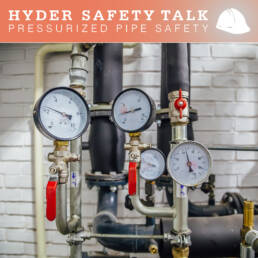
As we get into the later stages of the job, we have to consider the later stages of safety as well. Although there may not be as many high-risk activities, there is still work going on and mitigations that we need to consider. One that comes into mind, not only for safety but quality is the introduction of water in the pipes of the building. We have to not only think about the safety procedures for hydrostatic (hydro) testing but also the quality aspects of having pipes filled with running water and the potential to have leaks and damage to finishes.
In this week’s safety talk let’s review some of the safety precautions with hydrostatic testing as well as some best practices that will keep us safe during testing and protect the quality of our work.
Safety Precautions in Hydrostatic Testing
Hydro testing is a risky process as it involves pressurizing the system, which can fail and cause serious injury or property damage. Although testing is performed per testing procedures, the following are risks associated with hydrostatic testing:
- Hydro testing must be performed under the supervision of a competent person.
- Consider barricading the testing area to restrict access near valves and connections.
- Provide whip checks to secure the hoses from disconnecting.
- Equipment used for pressure testing and inspections must be certified and calibrated before use.
Hydro Testing Best Practices
- Use safe work practices and procedures
- Carrying out safety meetings on test days and disclose the procedure and its respective risk analysis.
- No simultaneous work can be performed on the pipe while the test is being carried out; this includes the filling and draining of the pipe.
- Notify all personnel about the possible effects in case the test fails. If the test is in a populated area, implement all the necessary controls and barricades.
- Maintain minimum safety distances between the test area and people.